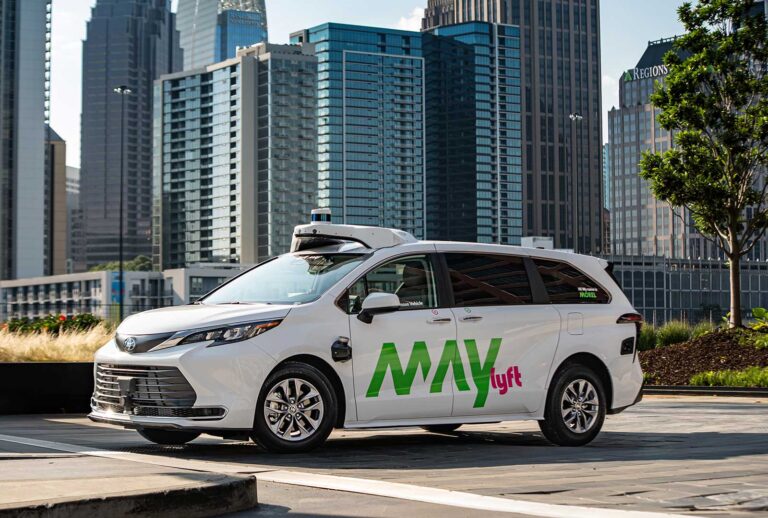The Platform For Autonomy
Danny Shapiro, Vice President, Automotive, NVIDIA joined Grayson Brulte on The Road to Autonomy podcast to discuss why NVIDIA is the platform for enabling autonomy.
The conversation begins with Grayson and Danny discussing how NVIDIA developed the platform for autonomous vehicles and why NVIDIA first entered the automotive market.
We’ve created an open platform. It’s an accelerated computing platform for autonomous vehicles.
– Danny Shapiro
In 1999, NVIDIA invented the GPU to overcome performance bottlenecks of the CPU.
Think of it as lanes on a highway, where a CPU maybe would be a dual-core or quad-core. It would have two lanes or four lanes for data to travel. The GPU has thousands of lanes. A highway with a thousand lanes is going to accommodate a lot more traffic.
– Danny Shapiro
With over 370 automakers, tier 1 suppliers, developers, and researchers as partners, NVIDIA is playing a crucial role in ushering in the future of autonomy. A lot more goes into an autonomous vehicle than just the autonomous driving stack. The user experience will be an important element to success and NVIDIA’s GPUs are being used to improve speech recognition in-vehicle.
Speech is very complex. You have many different languages. You have different accents. You have the same word that can mean different things, so the context matters.
– Danny Shapiro
NVIDIA is working on bringing natural language processing to the edge with the goal of reducing latency and improving the user experience inside of the vehicle. As an example, Danny shared the following scenario:
You could say it’s warm and the car would respond, do you want me to turn on the AC or roll down your window? You can say, I will roll down the window. The car will also be able to recognize was it the driver or the passenger speaking.
That’s a multi-modal approach where we are using AI on the voice and also with a camera inside that can monitor the occupants, read lips and determine who was talking. It would roll down the appropriate window based on who was speaking.
– Danny Shapiro
This is the future of in-vehicle experiences and Mercedes, through a partnership with NVIDIA, is beginning to deploy the early stages of this technology in their new flagship 2022 EQS sedan. In the future when SAE Level 4 autonomous vehicles become available, the inside of the vehicle could become an interactive gaming experience.
Integrating the motion of the vehicle with what is happening in virtual reality can be a really amazing experience.
– Danny Shapiro
In the interior of SAE Level 4 autonomous vehicles, window glass will become augmented and screens will be ubiquitous, suggests Grayson. This new digital real estate will allow brands to create bespoke experiences for paying passengers, creating new potential revenue streams.
Disney is an example of a brand that stands to benefit as it can extend the “Disney Experience” into the vehicle. Grayson shares an example of how Disney can potentially create Star Wars autonomous vehicles to further enhance the new Star Wars: Galactic Starcruiser two-night immersive experience at Walt Disney World in Orlando, Florida.
The same technology that is used to develop immersive experiences is used to develop autonomous vehicles — simulation. With DeepMap joining NVIDIA, DeepMap’s maps will be used to enhance NVIDIA’s simulation technology.
Through simulation, we can train the vehicle to be smarter.
– Danny Shapiro
Inside of NVIDIA, there is one centralized engineering organization, which has many benefits as engineers are able to learn from each other and apply processing techniques to different industries from autonomous driving to health care.
If you look at something like autonomous driving where we are taking images from front-facing cameras and trying to detect pedestrians, our health care group and the work they are doing in medical imaging and cancer research leverages a lot of that same technology. Because if you do a scan, an MRI, an X-Ray, you are looking for cancer cells. It’s not that different to process from what we are doing with pedestrian detection.
– Danny Shapiro
With NVIDIA’s core approach towards engineering and solving the world’s biggest challenges through compute, the company was busy simultaneously building an autonomous trucking business at the same time they were building their automotive business. Today, NVIDIA has 15 truck partners to complement its 370+ automotive industry partners.
We are not building the trucks, we are not building the cars, but we are helping our customers do their life’s work and create amazing products.
– Danny Shapiro
Wrapping up the conversation, Grayson and Danny discuss NVIDIA’s data center strategy and the advantage for autonomous vehicle and trucking companies to build autonomy solutions on the NVIDIA platform.
Follow The Road to Autonomy on Apple Podcasts
Recorded on Tuesday, August 10, 2021




